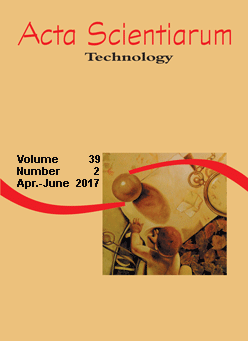<b>Properties of multi-laminated plywood produced with <i>Hovenia dulcis</i> Thunb. and <i>Pinus elliottii</i> wood under different pressing pressures
Abstract
This study aimed at evaluating the effect of different pressing pressures and the influence of the wood features on the properties of plywood produced with sapwood and heartwood Hovenia dulcis combined with Pinus elliottii. To support the discussion, the anatomical and physical characterizations of the wood were carried out. The panels were produced by applying three different press pressures (0.88, 1.18 and 1.47 MPa) and with six combinations of wood veneers. Phenol-formaldehyde resin was employed, 160 g m-2 in a simple line and 35% solid content. The anatomical analysis revealed that the sapwood is more permeable than the H. dulcis heartwood. The H. dulcis wood basic density it was higher than that of the P. elliottii. Increased press pressure raised the values of the apparent density, thickness swelling and thickness swelling plus recovery of the plywood and water absorption reduction. The panels produced with H. dulcis veneers presented higher apparent density, MOR, MOE and bonding line resistance, as well as lower water absorption and moisture content, than those produced with P. elliottii veneers. No difference was noticed regarding the plywood properties when the main effects were evaluated in relation to the use of H. dulcis heartwood and sapwood veneers.
Downloads
DECLARATION OF ORIGINALITY AND COPYRIGHTS
I Declare that current article is original and has not been submitted for publication, in part or in whole, to any other national or international journal.
The copyrights belong exclusively to the authors. Published content is licensed under Creative Commons Attribution 3.0 (CC BY 3.0) guidelines, which allows sharing (copy and distribution of the material in any medium or format) and adaptation (remix, transform, and build upon the material) for any purpose, even commercially, under the terms of attribution.
Read this link for further information on how to use CC BY 3.0 properly.





















